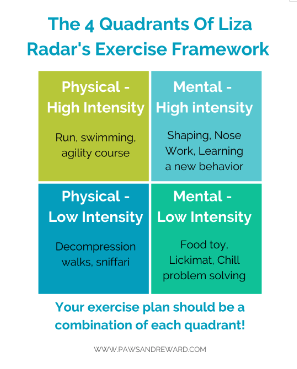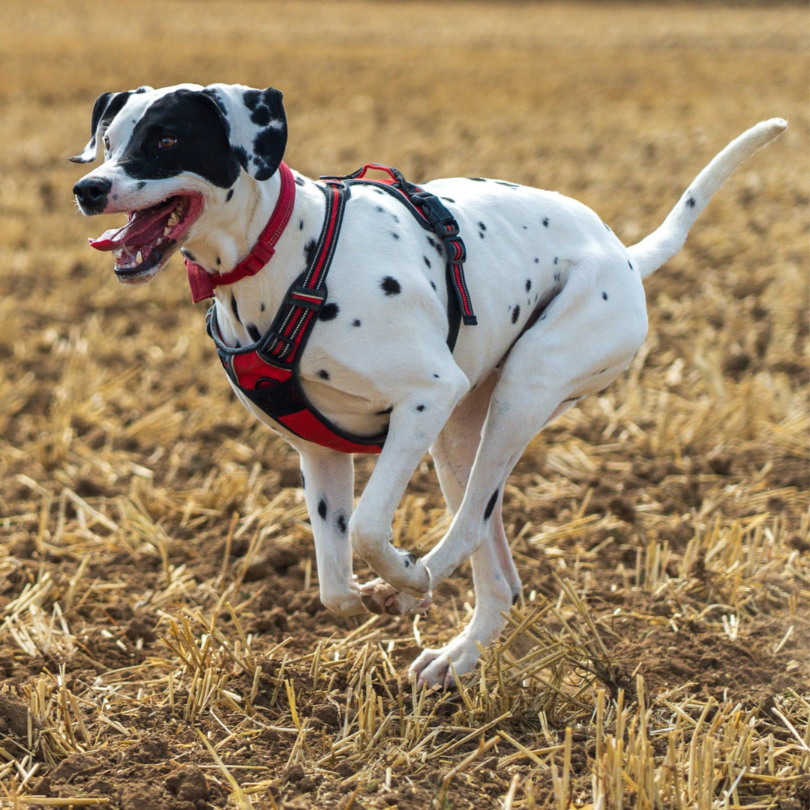In episode 57 of the Paws & Reward Podcast, I speak with Liza Radar about their canine exercise framework and their unique approach toward exercise and physical enrichment. During the episode, Liza introduces their exercise framework. The framework includes four elements: 1) Physical Exercise, 2) Mental Exercise, 3) Low Intensity, and 4) High Intensity. We discuss the details of each element and how you can create an individualized canine exercise program for your dog. Watch our conversation on my YouTube Channel.
What is your framework for canine exercise?
Different types of canine exercise are necessary to fulfill our dog’s care needs. The framework includes four elements: 1) Physical Exercise, 2) Mental Exercise, 3) Low Intensity, and 4) High Intensity.

The framework for canine exercise gives us the language we need to label the type of activity we choose for our dogs. Typically a combination of these quadrants is needed for each individual to meet their exercise needs.
Why is it important to know what canine exercise works for my dog?
Every dog is different, just like every person is different. What works for you might not work for another dog or person when it comes to working off physical and mental energy. Finding the right combination of exercises helps your dog be able to relax and feel balanced. It’s not just about exhausting your dog in one way (by running, training, or doing nature walks) but learning what combo is best to fulfill your dog’s needs.

How do I know that I’ve met my dog’s exercise needs?
Body language can tell us a lot about our dogs. When their needs are met, some signs of contentment include happy sighs, a relaxed body, the ability to chill in both body and mind, and the absence of restless energy.
Should I be tracking my dog’s exercise?
Tracking canine exercise can help you determine what works best for your dog and what doesn’t work as well. Take inventory of what type of exercise is already happening during the day. Here are some questions you can ask to determine what might need to change with your dog’s routine:
- How do the chosen activities fit into the four quadrants? What is missing, if anything?
- Is there an imbalance anywhere?
- What are the obstacles to achieving what my dog needs?
- Are those activities actually beneficial or are they adding more stress?
Take stock of how each type of canine exercise impacts your dog’s mental and physical energy. Try to notice patterns in your dog’s behavior after different kinds of activities.
How can I balance my dog’s needs with my own needs?
Something to keep in mind: Perfect is the enemy of good. Adhering to the perfect canine exercise routine each day isn’t going to happen. When you find ways to meet your dog’s needs, your life will be easier and therefore you can meet your own needs. Your exercise routine doesn’t need to be perfect, it just needs to be enough. Do what works for you.
Where to find Liza Rader:
- Focus Dog Training
- Webinar: Understanding Exercise: Unlocking an Integral Part of Any Behavior or Wellness Plan

